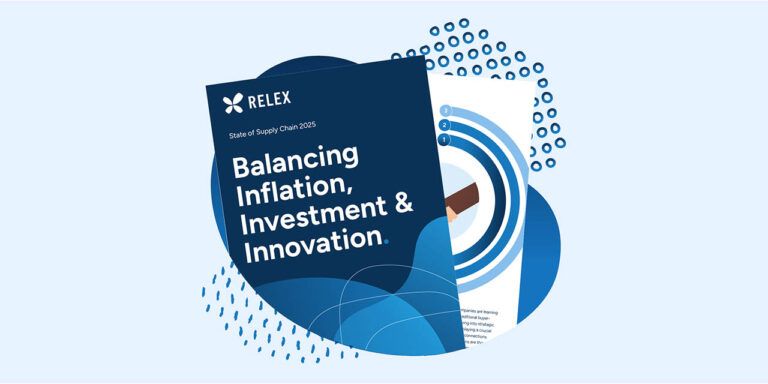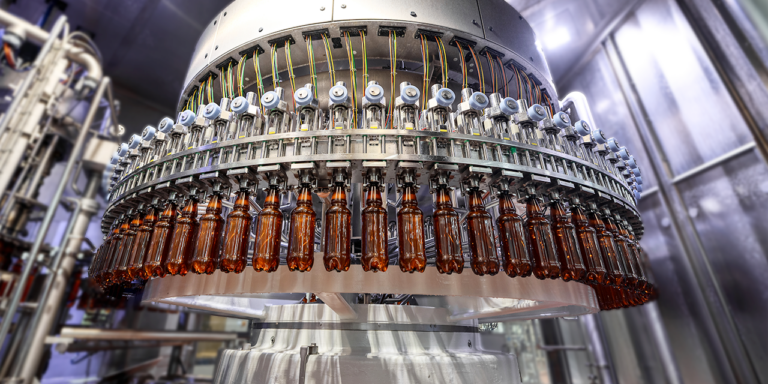Study examines how grocery supply chains survived the first wave of COVID-19
Aug 11, 2020 • 5 min
Though COVID-19 restrictions have begun loosening in some countries, the virus itself is still very much present and making its impact felt. Globally there are, as of this writing, three times more new diagnoses per day than there were in early April, and nobody truly knows what the future will bring. In light of this, the time is right to examine the key learnings supply chain professionals gleaned from the first wave of the COVID-19 pandemic.
With my colleagues from Aalto University in Helsinki, I have published a paper titled “Agile Planning: Avoiding Disaster in the Grocery Supply Chain During the COVID-19 Crisis.” We conducted a real-time study in which we interviewed stakeholders from different echelons throughout the grocery supply chain in Finland, from manufacturers to logistics companies to retailers.
In the earliest days of the crisis, when uncertainty was high and the outlook dim, many worried about grocery supply chains’ ability to cope with simultaneous shocks from both the demand and supply sides—something that had never before been experienced at this scale. Surprisingly, grocery supply chains in Finland actually managed quite well, by and large. Yes, they experienced shortages for some items and occasional empty shelves, but Finnish retailers were able to provide their shoppers with enough food even throughout the acute phase of the crisis.
We wanted to study why supply chains didn’t collapse as some feared. What were the actions that ensured these simultaneous shocks didn’t spread, causing food shortages and widespread panic? We identified the combination of practices and capabilities—including swift responses and agile planning—needed to recover quickly from the initial shock to the supply chain, sustain high performance, and protect the health of workers.
Our study identified two consistent supply chain goals for companies during this initial period of acute COVID impact:
- Maintaining availability to stabilize demand by stifling the potential for sustained panic buying and hoarding behaviors
- Avoiding a bullwhip effect in which an initial, temporary demand spike would drive increased retailer orders to manufacturers, then increased manufacturer production and orders to suppliers—ultimately flooding the supply chain with too much product
Both of these goals proved crucial for supply chain operations. As retailers across the world anticipate the next wave of COVID-19 or, further down the line, another event of this type, we are sharing the five propositions we developed for how supply chain operators can achieve these goals and avoid supply chain collapse during future supply chain shocks.
Proposition 1: Rapidly mobilize and transfer available resources to maintain availability and decrease the likelihood of panic shopping.
This is especially important when demand shifts from one channel to another, such as from food services to online retail. One study participant described moving order picking tasks away from food services, whose demand plummeted with mandated restaurant closures, toward individual online retail customers, whose demand surged with stay-at-home orders. This required infrastructure change as well, shifting from pallets to individual boxes for consumers, for example. Resource changes impacted IT teams, order picking, and transportation/logistics. This impacted manufacturers as well, as pack sizes targeted toward food services had to be adjusted for individual items targeted toward consumers.
Proposition 2: Introduce measures to combat the spread of the pandemic at plants.
Manufacturers might have only a single or handful of production lines dedicated to an item or even product family. If infection spreads through a plant, it could potentially mean that the entire product family, no matter how high in demand, might be out of stock for a long period of time. Manufacturers in this study took measures such as providing face masks and increasing hygienic standards beyond the already high standards established in fresh food sectors. Some divided their workforce into smaller groups that were distanced from one another to prevent the spread of the disease within a facility, should an employee contract it.
Proposition 3: Openly share information throughout the supply chain to maintain availability and avoid a bullwhip effect.
Sudden demand changes combined with supply uncertainty made supply chain transparency more important than ever before. In particular, the situation called for effective communication throughout the supply chain between retailers, wholesalers, and suppliers of the essential products that saw the most significant demand increase. The information exchange in the supply chains we observed during this period—for example, daily calls that openly shared production capacity information—was more open and frequent than standard industry practice. This level of transparency helped stores maintain higher availability for their customers and curbed potential hoarding behaviors in the medium- to long-term, avoiding a bullwhip effect throughout the grocery supply chain.
Proposition 4: Enable agile adaptation of sales and operations planning principles and processes.
A shock of this magnitude makes old forecasts redundant because there is simply no predecessor that would allow automated statistical forecasting to be effective. The key measures we observed to address this challenge were 1) shortened planning horizons, 2) a focus on expertise, and 3) customizing outgoing orders en masse in inventory management systems. My colleague Janne anticipated this strategy in a blog post published early in the pandemic that addresses the topic in more detail.
This study, though, found that both manufacturers and retailers prioritized the products most affected by demand increase by adjusting the planning and prioritization rules in their planning systems. Study participants shortened their planning cycles and horizons from weeks to days to enable rapid adjustments in decision-making driven by the most recently available information. Scenario planning was widely used to prepare for alternative demand situations. In some cases, the push-pull boundary for high demand items was moved from the retailer toward the manufacturer; at the peak of the supply crisis, we observed manufacturers allocating product to customers regardless of the retailer’s desired order amount to more effectively push available product to stores and limit order quantities when necessary. These complementary adjustments helped maintain availability for essential products throughout the acute phase of the crisis.
Proposition 5: Proactively identify and manage bottlenecks in the supply chain.
When manufacturers’ production capacity was maxed out, they decided to drop non-essential products and focus their efforts on high-demand items instead. Retailers had to adjust for bottlenecks as well, and the challenges that emerged were not always what they anticipated. For example, one ecommerce retailer anticipated order picking as their bottleneck, but found that transportation was actually their most critical challenge. Ultimately the most successful companies were able to quickly and accurately identify their new bottlenecks and focus their efforts on bottleneck management.
In summary, our study concluded that to respond quickly and effectively to a shock of this scale, companies and supply chains need simultaneous measures in resource planning, plant management, communication, sales and operations planning, and supply chain control. If the companies we studied had failed to undertake these measures, panic shopping would likely have escalated, and supply chain performance would have been significantly compromised by a bullwhip effect. As the grocery industry anticipates a potential next wave of COVID-19—or even similar events looming in the distant future—agile planning and bottleneck steering are the key measures that will help companies stay resilient enough to weather the storm.
Lauri Loikkanen is a long-term RELEXian currently on study leave to pursue his PhD at Aalto University’s Department of Industrial Engineering and Management.



